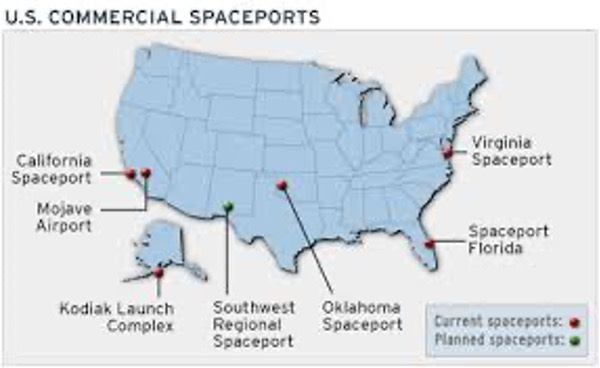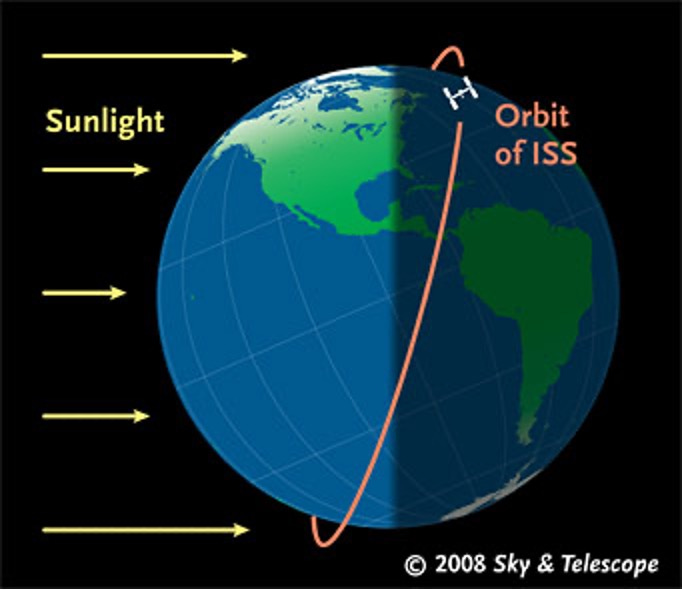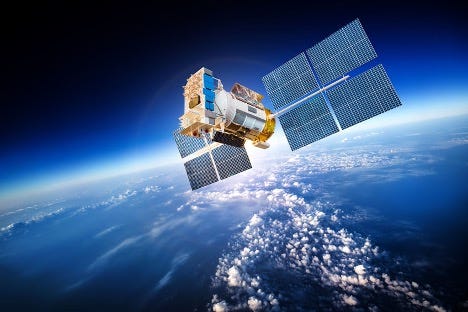Satellites Part II: How do they get there?
From shop floor to orbit.
In Part 1 we established why satellites are so important. They are critical for internet, GPS, cell phones, and many other things we consider necessities. We even need them for waffles—I swear there’s a train of thought that backs up that statement, I just don’t know what it is. We’re very thankful to have satellites, but they don’t get into space on their own. How does a satellite go from a shop floor to space? Welcome to Part 2 of our 4-Part saga on satellites.
To fully put this into context, remember the different types of orbits that satellites have: low Earth, medium Earth, and Geosynchronous orbit. Low Earth orbit is around 200-500 miles from Earth, Geosynchronous orbit is ~22,000 miles, and medium Earth orbit is everywhere in between. A satellite’s orbit will determine how big of a rocket is needed to bring it up—the further you want to go, the bigger the rocket you’ll need. The next factor is orbital inclination—the angle the orbit is offset from the Earth’s equator.
This angle is useful if you need your satellite to cover areas closer to the poles. For example, satellites that communicate with south pole observatories have an inclination angle of nearly 90 degrees—they pass almost directly over the north and south poles (this is called a polar orbit).
The last factor we will consider is orbital direction. We classify this in two ways: prograde and retrograde. Prograde is simply an orbit that moves in the same direction as Earth’s rotation, and retrograde is the opposite. These serve different purposes but prograde has one clear advantage—we’ll get into this later.
Now let’s go back to the beginning. You’re a satellite manufacturer and AT&T comes to you and says, “we need a new communications satellite to reach our customers in northern Canada.” What do you do? Tell them you majored in Marketing and turn down the job? No chance. AT&T has asked this before, and they know that you can charge them anywhere from $10 to $400 million for this task. [1] All you have to do is get 4,000 pounds of metal into space.
Typically, large enough communications companies like AT&T build their own satellites in sealed laboratories like this one: [2]
The labs require that employees wear full body PPE so that no dust or other unwanted materials get into the components. They need to be so careful because satellites employ complex radiation shields and other electromagnetic protection that even a small grain of sand can greatly interfere with.
Once built, the lab ships the satellites to one of a few launch pads. Most of us probably know of the launch pad in Cape Canaveral, Florida, at the southern tip of the state. This is where the Space Shuttle and many other famous missions took off. There are, however, a few other launch sites in the US—these include Vandenburg Air-force Base in southern California and one on the Marshall Islands in the Pacific. Most of these large “spaceports” are on the water. This is because any piece of the rocket that gets released after launch may fall back to Earth, and naturally we want that stuff landing as far away from people as possible. [3]
Say we want to launch into a prograde orbit – in the same direction as Earth’s rotation. Which one of these spaceports should we launch out of? (from our perspective the Earth rotates eastward) I’m assuming you got it right, right? The spaceport in Florida! This way we can launch east out over the water and away from people. Want to go into a retrograde orbit? Launch out of California! What about a polar orbit? If you want to start by going south – southern California is your best bet. North? Leave out of Florida northeast to avoid land. This latter route is the way we launch astronauts to the International Space Station. The ISS has an inclination of ~52 degrees so we need to launch northeast to intercept it. [4]
The next factor here is Earth’s rotational speed. Currently you are moving with the Earth’s surface at about 1,000 miles per hour. Don’t panic though; we don’t feel it because everything around us is also moving that speed (including the atmosphere) and we aren’t accelerating. It works the same as being in a plane at a constant speed—it doesn’t feel like you’re moving at all. This aside, the speed of the Earth’s rotation is a huge advantage when launching into space. To be stable in Low Earth Orbit you need to get up to about 17,000 mph. When launching in the same direction as the Earth’s rotation, you get a 1,000 mph boost. If going into a retrograde orbit, you need to overcome the extra 1,000 mph. This is why, when possible, most satellites in space are in prograde orbits.
Now that we know where we’re launching from, we get to pick our rocket. There are a wide variety of launch vehicles you can choose from depending on the size of your satellite. SpaceX, Northrop Grumman, Boeing, NASA, and a few others all offer rockets to fit your needs. Like we said before, these companies charge anywhere from $10 million to $400 million for a launch. Launching things into space usually costs around $10,000 per pound of payload. SpaceX has this fun calculator where you can estimate how much it would cost to send something of your own into space. Usually, however, for projects as large as ours it’s a much more rigorous – and expensive – process.
Now it’s launch day. We have our vehicle and our satellite, which has been loaded onto our rocket over the course of several weeks, and we’re on the launch pad. 10, 9, 8, 7… you know the rest. Within 2 minutes of launch our satellite is already traveling close to 3,000 mph and climbing. At around 3 minutes into launch stage 1 of our rocket separates. This is the bottom ~80% of the rocket as we saw it on the launch pad. It’s run out of fuel and is now empty weight, so it’s disconnected and left behind. In the case of SpaceX this is what returns to Earth and lands itself. Then stage 2, a smaller rocket that was encapsulated inside the first, turns on and keeps accelerating the satellite up and forward. Check out this video of a SpaceX rocket’s stage separation (0:10). Stage 2 brings our satellite all the way up into its final orbit about 20 minutes later. At this point, after some orbital corrections, the satellite is released and is allowed to open its solar panels. It probably looks something like this: [5]
Stage 2 of our rocket, once clear of the very, very expensive satellite, slows itself down and falls back to Earth. As it re-enters the atmosphere it burns up due to the high speeds and air resistance. So now we are left with just our satellite in its intended orbit.
Congratulations! You made it to space! A couple years and millions of dollars later we’ve successfully brought this satellite into its home in the night sky. Now at night, when you’re in a verrrry dark area, you can look up and see nothing. It’s too small, sorry. But I promise it’s there! And it’s receiving and sending more information per second than any internet connection you’ve ever had. Think of them as giant wifi routers, except they don’t transmit wifi and Comcast can’t come and pretend to fix one. Never mind they’re nothing like wifi routers. Maybe more like an orbiting cell tower? I don’t know. Make your own analogies.
Stay tuned for next week when we’ll learn how satellites operate once they’re up there, and eventually where they’ll go when they die. As always thank you for reading!
Check out last week’s newsletter here.
Special thanks to Joe Lovinger for edits.
For more details…
[2] https://www.getconnected.aero/2015/05/is-the-inmarsat-i-5-f3-launch-delay-really-that-important/
[3] https://line.17qq.com/articles/dpdhmhopv_p7.html
[4] https://space.stackexchange.com/questions/18553/why-does-the-iss-track-appear-to-be-sinusoidal







Cool, but they need power in order to work. Can we assume they're all solar powered? They must also have batteries for when they're in the shadow of the earth...
Matthew, I am so happy that someone as smart as you is our future.